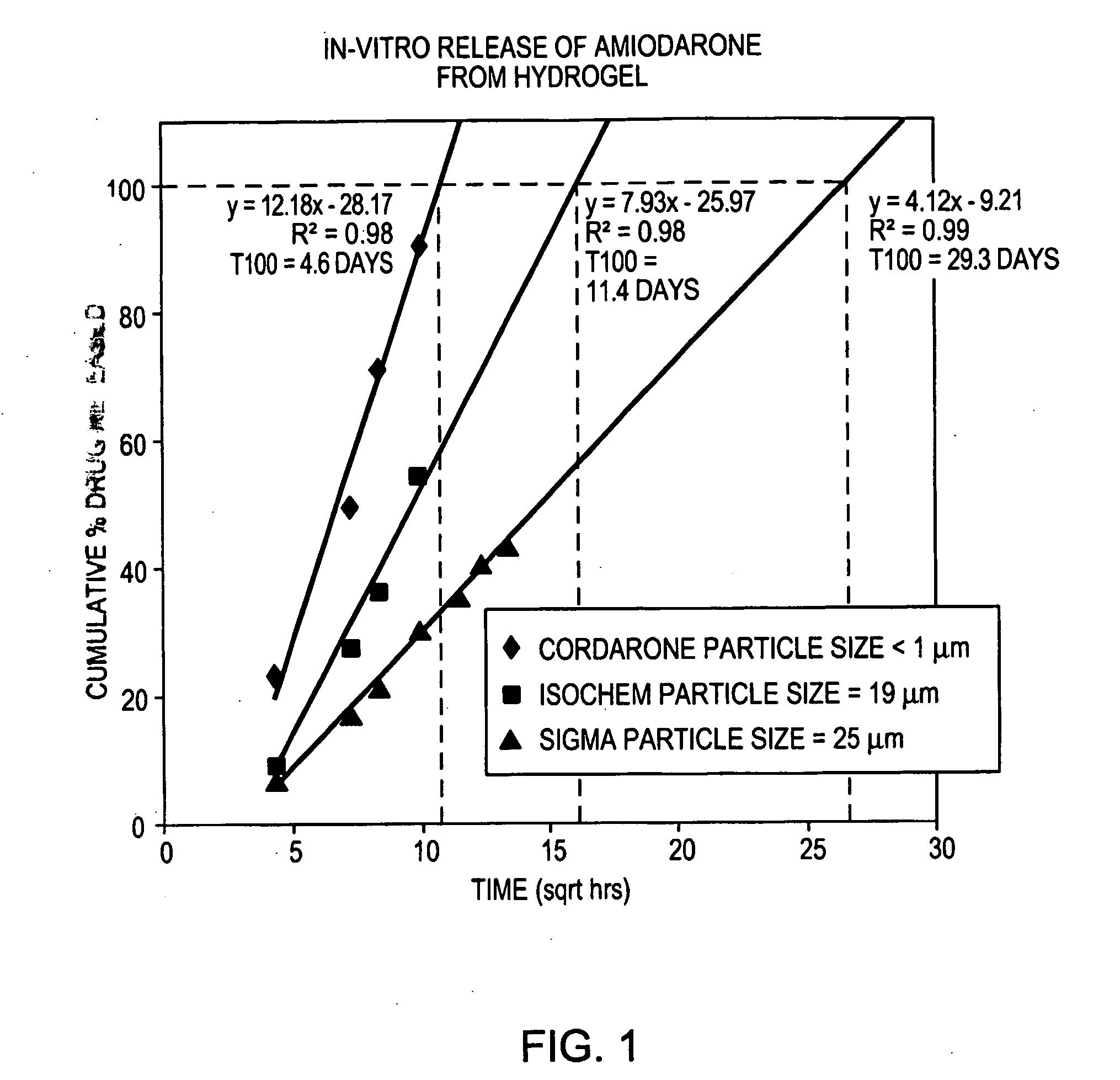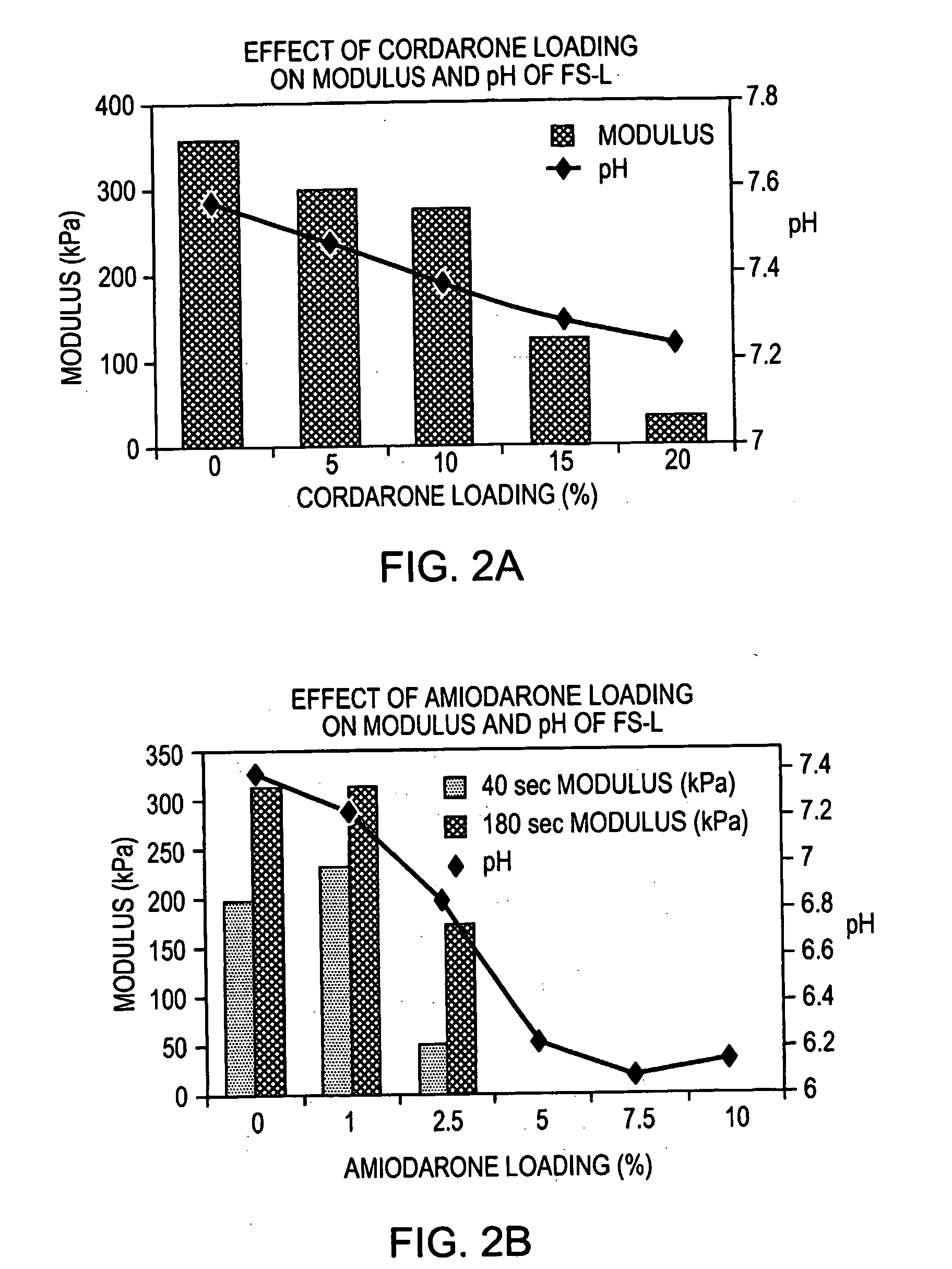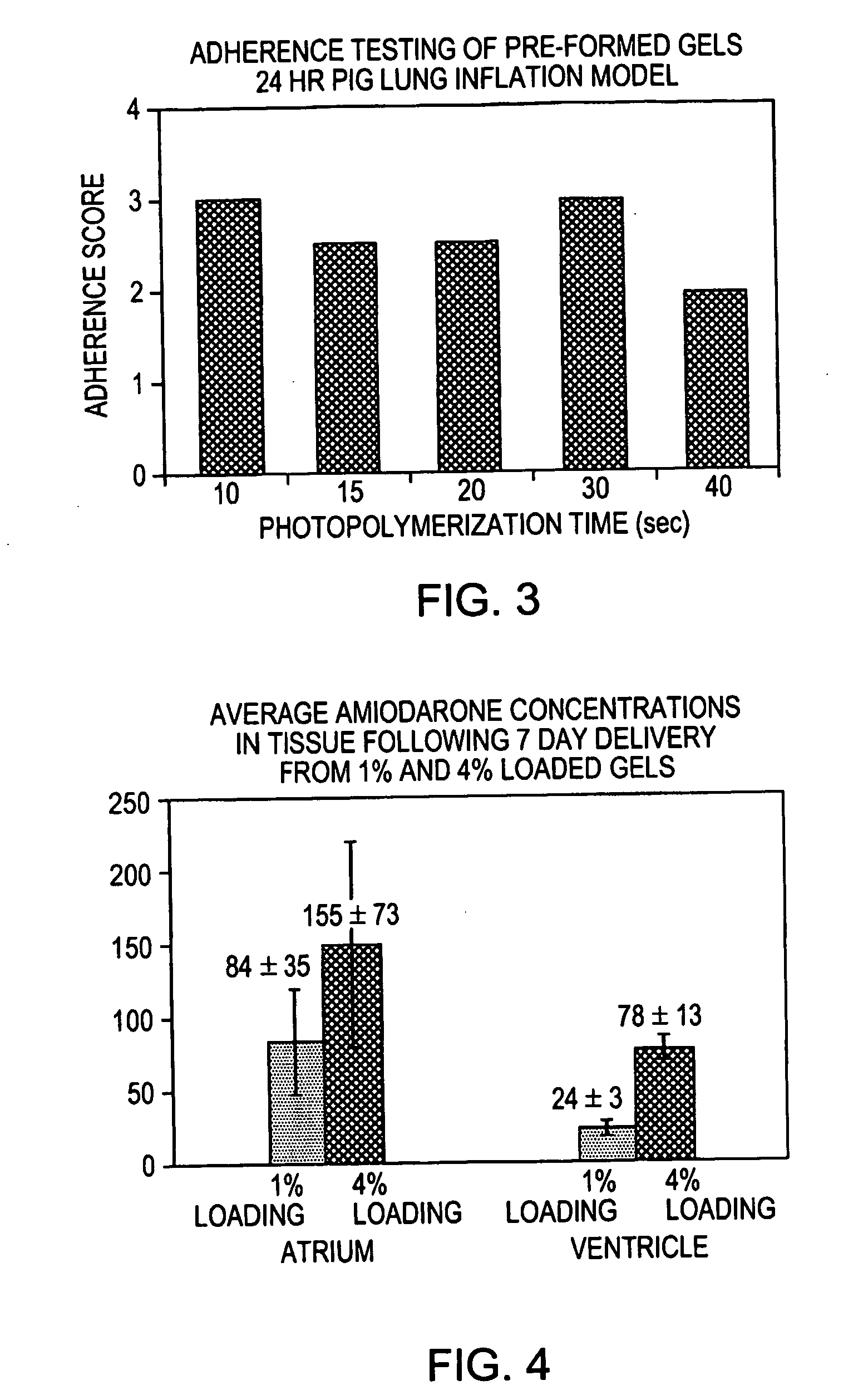Controlled release of anti-arrhythmic agents
a technology of anti-arrhythmic agents and controlled release, which is applied in the direction of drug delivery, powder delivery, pharmaceutical non-active ingredients, etc., can solve the problems of systemic administration of anti-arrhythmic agents that are not always desirable or practical, and disturb the regulation of the heartbeat, so as to improve the outlook for myocardial compatibility, improve the effect of inflammatory response and simple, reliable application
- Summary
- Abstract
- Description
- Claims
- Application Information
AI Technical Summary
Benefits of technology
Problems solved by technology
Method used
Image
Examples
example 1
Preparation of Amiodarone-Loaded FOCALSEAL-L™ Hydrogel Patches Directly onto Tissue for Release of CORDARONE™
[0094] CORDARONE™ (Wyeth Laboratories Inc., Philadelphia, Pa.) (0.5 g) was added to FOCALSEAL-L™ macromer solution (Genzyme Corporation, Cambridge, Mass.) (4.5 mL) and the combination was mixed with a spatula until homogeneous. Over time, the material showed phase separation, which resulted from the precipitation of amiodarone from the macromer solution, and the material formed a submicron amiodarone suspension.
[0095] The resulting amiodarone suspension was applied to the myocardium of a live pig by brushing the FOCALSEAL-L™ primer solution onto the myocardium, mixing a small volume of the FOCALSEAL-L™ macromer component containing amiodarone with the primer, and overlaying the mixture with a larger volume of macromer component containing amiodarone. The material was then illuminated with 40 seconds of visible light to polymerize the macromer and form a hydrogel patch onto t...
example 2
Amiodarone in a Solid Particulate Form in FOCALSEAL-L™
[0097] Amiodarone (Isochem, SNPE North America, Princeton, N.J.) (11 g) was added to a solution of distilled water containing 0.3125% PLURONIC™ F127 as surfactant (600 g). The particles were mixed to form a coarse suspension using a Caframo overhead mixer at 500 rpm for 5 minutes. Once the particles were completely wetted with the aqueous surfactant solution, the mixture was transferred to a microfluidizer (Microfluidics International Corp., Newton, Mass.) and homogenized at 20,000 psi for 15 minutes.
[0098] The fine suspension was transferred to a 2 L flask and assayed for drug content by HPLC. Based on the assay results, the drug concentration was adjusted to 1.43% by adding a solution of 0.25% PLURONIC™ F127 in distilled water. The solution was mixed well and part of the solution (700 g) was transferred to a 2 L beaker. The FOCALSEAL-L™ macromer (200 g) was added to the beaker and mixed until dissolved. A buffer containing 10×...
example 3
Release Rate of Amiodarone from Hydrogels
[0101] Three different particle sizes of amiodarone were tested to determine the effect of particle size on release rate from hydrogels. Amiodarone was obtained from three different suppliers. Amiodarone purchased from a first supplier (Sigma) was determined to have a mean particle size of 25 microns by particle size analysis using a Malvern Mastersizer 2000. Amiodarone from a second supplier (Isochem) had a particle size of 19 microns. A third particle size was obtained by mixing CORDARONE™ brand amiodarone with a hydrogel forming solution, as described in Example 1. The CORDARONE™ material is an injectable solution of amiodarone in water containing TWEEN™ surfactant and benzyl alcohol. Upon mixing with the gel-forming solution, the amiodarone precipitated, forming a hazy suspension of non-settling particles. Microscopic examination indicated that these particles were submicron in size. Amiodarone from the other two suppliers was prepared i...
PUM
 Login to View More
Login to View More Abstract
Description
Claims
Application Information
 Login to View More
Login to View More - R&D
- Intellectual Property
- Life Sciences
- Materials
- Tech Scout
- Unparalleled Data Quality
- Higher Quality Content
- 60% Fewer Hallucinations
Browse by: Latest US Patents, China's latest patents, Technical Efficacy Thesaurus, Application Domain, Technology Topic, Popular Technical Reports.
© 2025 PatSnap. All rights reserved.Legal|Privacy policy|Modern Slavery Act Transparency Statement|Sitemap|About US| Contact US: help@patsnap.com



